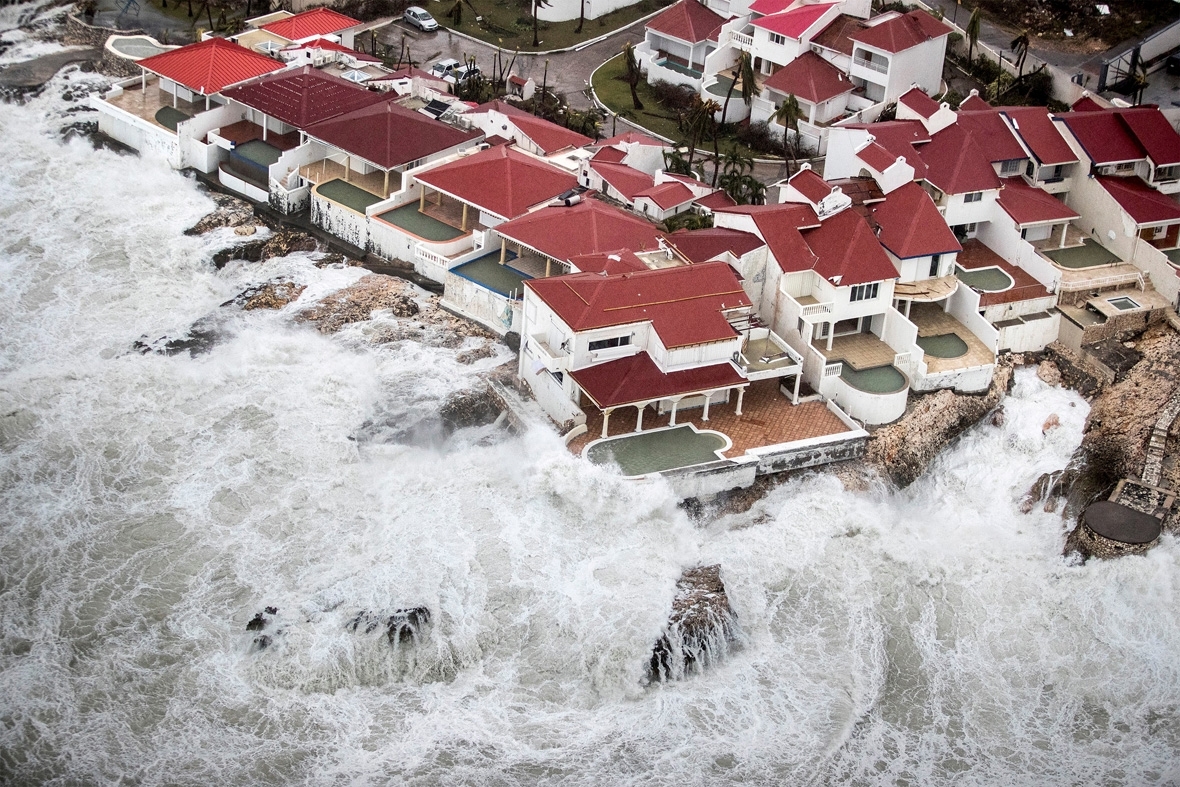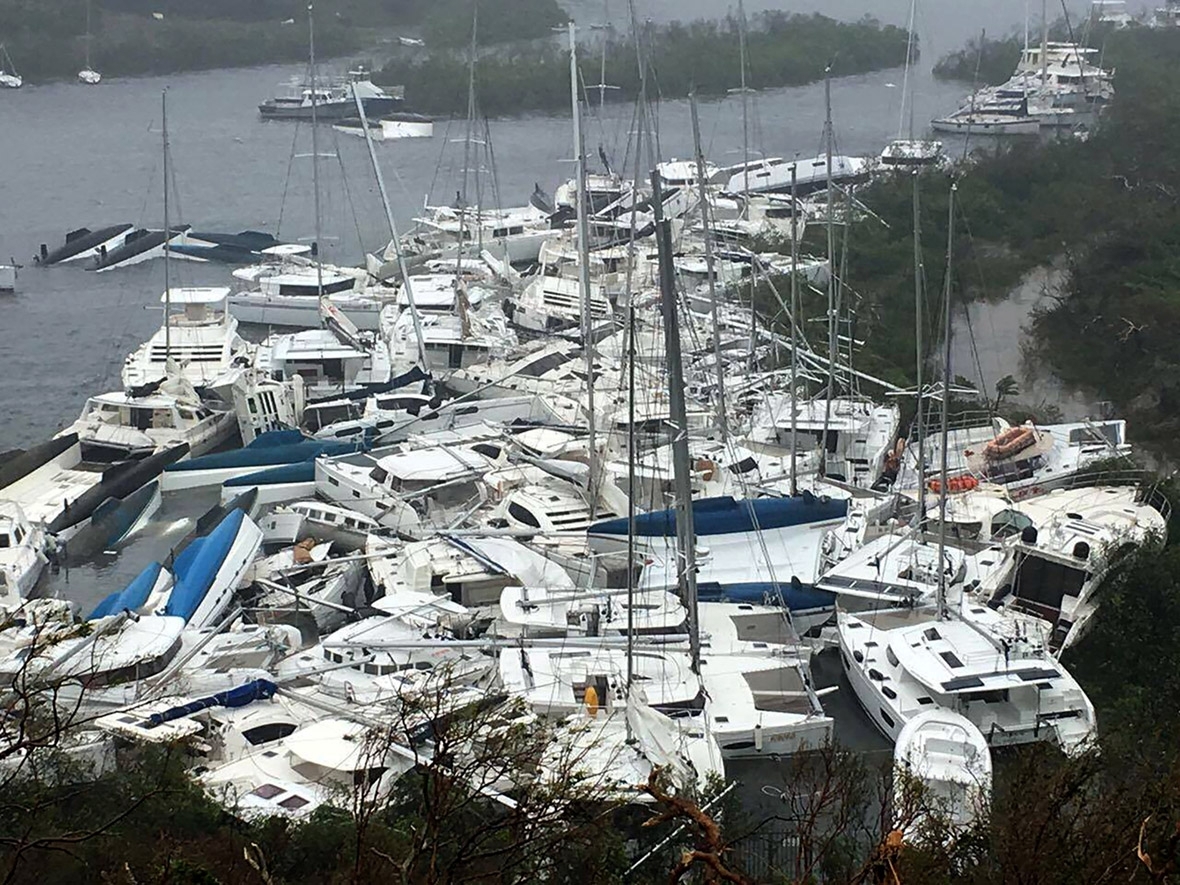Is Hurricane Irma the 'Big One' that Florida has feared will wipe out its coastal cities?
Storm has triggered panic in region of more than 6 million people clustered along a narrow ribbon of coastline.
They call it the Big One — a mythic, massive hurricane that would obliterate the densely populated southeast coast. And it has long been the stuff of Florida's nightmares.
Irma, it appears, could be it. The storm has triggered near panic in a region of more than 6 million people that includes Miami, Fort Lauderdale and West Palm Beach, clustered along a narrow ribbon of coastline that has seen nearly double-digit population growth over the past five years.
Isabella Janse Van Vuuren just arrived — she left her home in South Africa two weeks ago to start a job as a stewardess on a yacht, which she and other crew members spent time securing. As Irma approached, she was trying to decide whether to stay or go.
"I'm terrified," she said. "I'm not used to this. I just want to go into a cave and hide, basically. This is not a nice feeling."
But for veterans of life in the Sunshine State, hurricanes are as Floridian as oranges and Mickey Mouse. And every hurricane season brings with it the chance of cataclysm.
In 1928, a hurricane caused Lake Okeechobee to burst its banks, unleashing a 20-foot (6-meter) wall of water that killed an estimated 2,500 people. The event was a key part of Zora Neale Hurston's classic 1937 novel, "Their Eyes Were Watching God."
"All gods who receive homage are cruel," she wrote. "All gods dispense suffering without reason. Otherwise they would not be worshipped. Through indiscriminate suffering men know fear and fear is the most divine emotion."
Another famed storm, the killer 1935 Labor Day hurricane that swept across the Florida Keys, is central to the plot of the 1948 movie "Key Largo," which starred Humphrey Bogart and Lauren Bacall.
Irma could be the strongest hurricane to ever hit southern Florida. Andrew hit in August 1992 and caused widespread damage south of Miami. It caused the deaths of at least 40 people in Miami-Dade County alone, according to the National Hurricane Center, with 65 deaths blamed total including those in Louisiana and the Bahamas.
"It was very scary. We just had no idea how bad it was going to be," said Rosi Ramirez, who went through Andrew as a child in Homestead.
She's leaving Florida for South Carolina with her three children. "I don't want my kids to go through that traumatic experience. I hadn't thought about Andrew in a while. But now I am seeing some flashes of what we went through. It is all coming back."




Floridians have not been directly hit by a major hurricane since Wilma in 2005, but if they needed any reminder of what might await them, they saw the catastrophic flooding and damage caused by the storm Harvey in Houston. Jenna Wulf, a native Floridian who is six months pregnant, said seeing the damage caused by Harvey made her family more cautious; she stocked up on water Saturday and the hurricane shutters are going up on her home in suburban Plantation.
"I think it's such devastation that you'd be silly not to go through the motions," she said. "I'm nervous because I'm pregnant and because I have a baby already. I'm trying not to watch (the news) because I think it's causing more panic."
Andrew is often considered the worst storm in South Florida's history. But in terms of fatalities, it didn't come close to the "Great Miami Hurricane" of September, 1926, which killed 372 people when it came ashore directly over the city, carrying with it a 10-foot (3-meter) storm surge. Many died after apparently thinking the worst was over when the storm's relatively calm eye passed over Miami, only to be caught without shelter in the second part of the hurricane, according to a National Weather Service history.
"Residents of the city, unfamiliar with hurricanes, thought the storm was over and emerged from their places of refuge out into the city streets. People even began returning to the mainland from Miami Beach. The lull lasted only about 35 minutes," the history says.
"The intensity of the storm and the wreckage it left cannot adequately be described," it says.
The hurricane brought a halt, at least temporarily, to a growth boom which saw Miami's population more than double in just six years. Today's population of Miami-Dade County is about 2.7 million.
Craig Pittman, an environmental reporter at the Tampa Bay Times and the author of the bestselling book "Oh, Florida," said the mythic Big One is just that — a myth. Hurricanes are just a fact of life in a state that is hit by the big storms more often than any other state. And even if the Big One were to strike, he doubts that it would deter people from living in — or visiting — what many consider paradise.
"We're the state that's constantly trying to kill us," he said. "We're the state with sinkholes, shark bites, alligators and lightning. And we get hit by hurricanes. Yet people keep flooding here day after day."
People like Austin Spitler, a former Miami Dolphins player who moved from Ohio nine years ago. He said he never considered a potential storm as a reason to leave.
"It never crossed my mind, to be honest with you," Spitler said. "It was the lure of the sun and the sand. The beautiful weather far outweighs any of the hurricanes that come through."
But he added: "I hope I'm not eating my words."
© Copyright IBTimes 2025. All rights reserved.



















